Discovery
According to legend, the appearance of coffee began in 600 AD with the discovery of Arabica coffee. The mythical story of coffee is linked to the accidental discovery by a goat herder named Kaldi while he was tending his goats in a mountainous forest region in present-day Ethiopia. While Kaldi was napping, his herd began to wander around the area. A few hours later, he woke up and was terrified when he couldn’t find his goats anywhere. Kaldi began searching and finally when he found his herd, a curious sight met his eyes. The goats were very excited and jumping around on their hind legs. Kaldi looked around and discovered that his goats had eaten red berries from a very strange tree. Kaldi felt worried, fearing that the goats would become sick from eating the strange fruit.

Kaldi had to spend a lot of time herding the goats back to their pen and decided not to tell his parents what had happened. The next day, when released outside, Kaldi’s goats again sought out the strange bushes from the day before and began eating the red berries. Kaldi observed carefully and noticed that the strange fruit did not affect his goats’ health. He took the risk of trying a few berries and immediately felt refreshed and alert.
Later, Kaldi brought the strange fruit home and told his parents the story. Kaldi’s parents gave some of the berries to the monks at a nearby monastery. The monks were delighted because after chewing the berries, they felt alert no matter how long their prayer sessions lasted. The monks decided to dry the strange berries so they could take them to distant monasteries. There, they mixed water with the dried berries to create a new beverage.
Formation and Development
After Kaldi discovered that the strange berries could help the spirit feel refreshed and alert, his story spread very quickly to the Middle East region. Coffee berries were transported from Ethiopia to the Arabian Peninsula and were cultivated on land in present-day Yemen. In Yemen, people used coffee husks to prepare a type of tea. It wasn’t until coffee appeared in Turkey that people began roasting and grinding coffee beans to create the type of coffee we know today.
Throughout this time, the Arabs always tried to keep the secrets of the coffee plant closely guarded. No one was allowed to carry live coffee berries or beans, only roasted and ground coffee could be transported. Around 1640, although roasted coffee had appeared widely in England and Europe, only the Arabs knew exactly the type of seeds and shape of the coffee plant.
It wasn’t until the early 1700s that the Dutch managed to steal a coffee plant from Yemen, and from then on, the whole world began to learn about the coffee plant. The Dutch first introduced this coffee plant to Java in Indonesia, and subsequently coffee spread throughout the world.
Coffee houses sprang up very quickly throughout Europe and became centers for information exchange among intellectuals. In the 1700s, coffee was brought to the Americas by a French infantry captain who planted and cared for a small coffee plant throughout the long journey across the Atlantic Ocean. This coffee plant was replanted on Caribbean soil in the nation of Martinique, and this was the original coffee plant that gave birth to more than 19 million offspring trees on the island within 50 years. Starting from such a simple beginning, coffee plants became widely cultivated throughout the tropical regions of South and Central America.
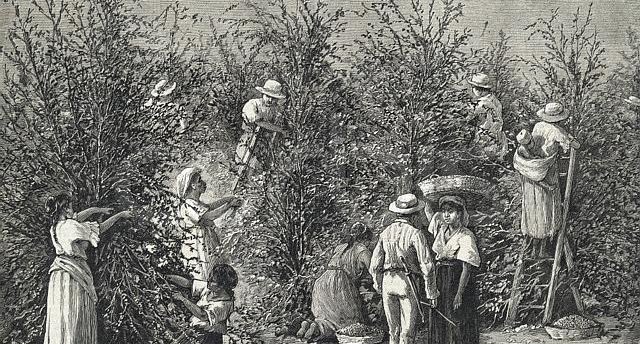
At that time, the US Congress decided to approve coffee as a national beverage to protest the excessively high taxes imposed on tea by the King of England at that time.
Today, growing and processing coffee has become a global industry, creating jobs for more than 20 million people. The global commercial value of coffee ranks second only to petroleum.
With an estimated annual consumption of over 400 billion cups, coffee is recognized as the most common and popular beverage in the world. Currently, coffee is grown in more than 80 countries worldwide.
The most commonly grown commercial coffee types are Robusta coffee (Coffea canephora) and Arabica coffee (Coffea arabica). In some countries, people also grow Liberica coffee (Coffea excelsa), but market demand for this type of coffee remains relatively low.
The Arabica coffee plant belongs to the Catimor variety. It is also called a dwarf variety. Catimor is a hybrid variety created from Hybrido de Timor and Caturra. This variety was created in the 1980s. A Catimor variety tree can grow up to 2.5 meters tall. Catimor coffee beans produce lower quality brew compared to other Arabica coffee varieties because they have lower acidity and flavor (two important characteristics that determine quality and taste).
Robusta coffee leaves are usually larger than Arabica coffee leaves and the tree can bear fruit for a longer period. Robusta coffee berries and beans are easily distinguished from Arabica coffee because they have a rounder shape. Robusta coffee can grow 7-10 meters tall. Robusta coffee beans produce more bitter brew. Some markets favor this characteristic, but other markets do not favor it much. Therefore, Robusta coffee is often blended with Arabica coffee.
Liberica coffee leaves are larger and rounder compared to Arabica and Robusta coffee leaves. Liberica coffee can grow over 10 meters tall. Liberica coffee yield is relatively low. The flavor of Liberica coffee beans is more bitter and sour. Harvesting Liberica coffee is also more difficult due to the tree’s height. Furthermore, due to the low yield and quality of this variety, the cultivation area is currently decreasing.
Coffee Development Process in Vietnam
The French introduced coffee to Vietnam around 1850. In the early 1900s, coffee was grown in some northern provinces such as Tuyen Quang, Lang Son, and Ninh Binh. Arabica coffee was also grown in the central region, for example in Nghe An and Ha Tinh provinces. Although Arabica coffee appeared first in Vietnam, there were also many Liberica coffee (Coffea excelsa) gardens planted during this time. It was much later that the French began cultivating coffee gardens in the present-day Central Highlands region.
Initially, people grew Arabica coffee in the Central Highlands region. During the growth and development process, the Arabica coffee trees were severely affected by rust disease and gradually deteriorated. Finally, people decided to replace Arabica coffee with Robusta and Liberica coffee.
In Quang Tri, the French also planted the first coffee trees, but later these were Liberica coffee.
During the 1990s, Vietnam’s coffee production increased rapidly, mainly due to:
- Implementation of the policy of land allocation to farmers;
- High coffee prices in 1994 and the period 1996-1998;
- Along with the sedentarization policy, many people from the plains migrated to live and intensively cultivate coffee in the Central Highlands region. Intensive coffee cultivation on a large scale occurred most typically in the Central Highlands region. Most of the newly planted coffee gardens during this period were Robusta coffee. Dak Lak province became the province with the largest coffee area in Vietnam, and Dak Lak’s coffee production accounts for nearly half of the total national coffee production.
In recent years, the Government has decided to stabilize the coffee growing area at 500 thousand hectares to avoid the situation of deforestation for coffee cultivation when prices rise. Currently, Vietnam has the second-largest coffee export volume in the world, ranking only behind Brazil, leading in Robusta coffee exports, and export volume accounts for about 14% of the global market share.
Uncle Ho and Coffee
The photo of Uncle Ho beside a coffee tree, preserved and presented by the former Information Center of the Ministry of Agriculture (now the Ministry of Agriculture and Rural Development) to the Vietnam Coffee Enterprises Union (now Vietnam Coffee Corporation) 20 years ago, has immense significance, encouraging the entire coffee industry to strive forward.
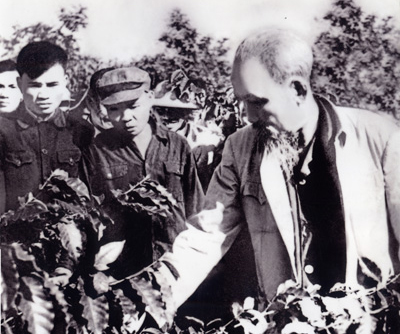
It was a warm winter morning, December 10, 1961, a day that the staff, workers, and people of the Phu Quy region will never forget, the day Uncle Ho visited the Dong Hieu farm – one of five large farms under the Ministry of State Farms at that time. Here, Uncle Ho spoke at a rally of more than ten thousand staff and workers from farms, enterprises, and local people who came to welcome Uncle Ho at the Dong Hieu farm stadium.
When the rally ended, Uncle Ho visited the farm’s production facilities. Uncle Ho did not get into the waiting Volga car but instead took the old GAZ-69 with license plate BAA 827 belonging to the farm director to visit the Nai Sinh production team (now Dong Thanh team) and stopped at coffee plot number 119. This was a Typica variety Arabica coffee plot. In the plot were tall black bean trees with wide canopies serving as shade trees for the coffee. This month, the Arabica coffee was in its red ripening period, with fruit hanging heavy on the branches. Uncle Ho talked with comrade Huynh Son Thach, the Party Committee Secretary, and comrade Tran Kim Manh – Director of Dong Hieu farm about coffee varieties, productivity, output, and coffee costs. When he heard the Party Committee Secretary report that the farm grew all three types of coffee – Arabica, Robusta, and Liberica – Uncle Ho asked why the farm didn’t grow all Arabica coffee. Uncle Ho instructed the staff and workers to focus on increasing productivity and reducing product costs. Uncle Ho gave an example: if making one mẫu of coffee cost 1,400 dong (at that time the cost of 1kg of coffee was 7 dong), it could only be exchanged for one plow. If the cost was reduced to 700 dong, then one mẫu of coffee could be exchanged for 2 plows. Uncle Ho also instructed the staff to study more scientific and technical knowledge to produce more and more coffee for export to enrich the Fatherland.
50 years have passed, implementing Uncle Ho’s teachings, the coffee industry has grown remarkably. This also demonstrates infinite gratitude and love for Uncle Ho. December 10 will go down in history and become the traditional day of Vietnam’s coffee industry.
Read more: What makes Vietnamese coffee so special
The Coffee Plant
Coffee is the name of a plant genus belonging to the Rubiaceae family. This family includes about 500 different genera with over 6,000 tropical tree species.
The coffee genus includes many different perennial tree species. However, not all species contain caffeine in their seeds, and some species are quite different from the coffee trees we commonly see.
Only two coffee species have economic significance. The first species, commonly called Arabica coffee in Vietnamese (scientific name: Coffea arabica), represents about 61% of coffee products worldwide. The second species is Robusta coffee (scientific name: Coffea canephora or Coffea robusta), accounting for nearly 39% of coffee products. There are also Coffea liberica and Coffea excelsa (called Liberica coffee in Vietnam) with negligible production.
Characteristics
Trunk
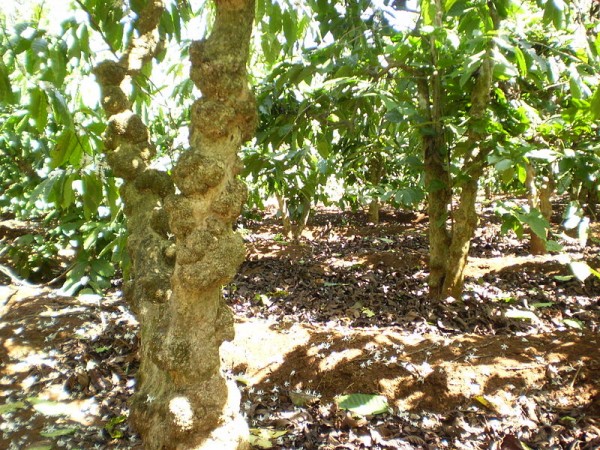
Arabica coffee trees can grow up to 6m tall, Robusta coffee up to 10m. However, on coffee farms, people usually have to prune to maintain a height of 2-4m, convenient for harvesting. Coffee trees have long, slender branches, short-stemmed leaves, dark green, oval-shaped. The upper surface of the leaves is dark green, the lower surface is lighter green. The length of leaves is about 8-15 cm, width 4-6 cm. Coffee tree roots are taproot type, penetrating deep into the ground from 1 to 2.5m with many secondary roots spreading around to absorb nutrients to feed the tree.
Flowers
Coffee flowers are white, with five petals, usually blooming in clusters of two or three. The flower color and fragrance easily remind us of jasmine flowers. Flowers only bloom for 3 to 4 days and the pollination time is only a few hours. A mature coffee tree has from 30,000 to 40,000 flowers.
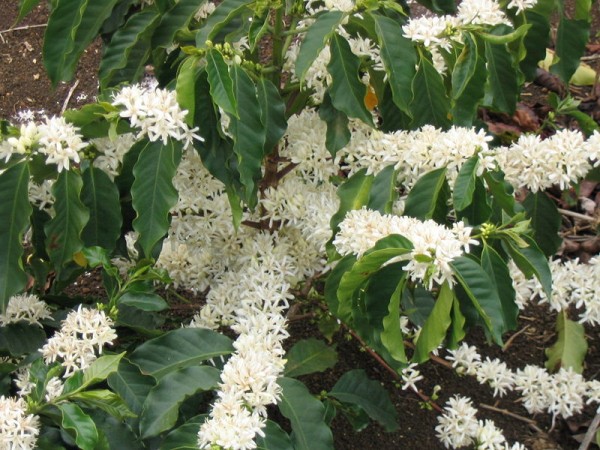
Right from when coffee trees flower and fruit, people have the first assessments of the coffee harvest. In major coffee-producing countries, this is especially important in making judgments about prices and markets. However, cold snaps or droughts can disrupt all calculations and push the market into completely different situations.
Fruit
Coffee is a self-pollinating species, so wind and insects have a great influence on the tree’s reproductive process. After pollination, it takes 7 to 9 months for the tree to produce oval-shaped fruit, externally resembling cherries. During ripening, the fruit color changes from green to yellow and finally to red. The fruit turns black when overripe. Due to this long flowering and fruiting time, a coffee crop lasts nearly a year and it’s possible for a tree to have both flowers and fruit simultaneously.
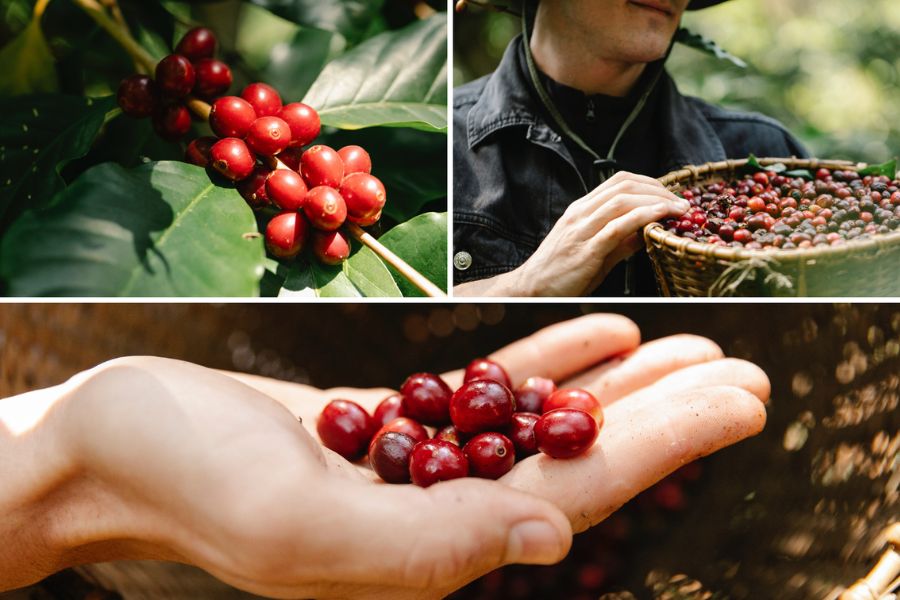
Typically, one coffee fruit contains two seeds. They are surrounded by the outer flesh layer. The two coffee seeds are pressed together. The contact surface between them is flat, while the outward-facing surface is arc-shaped. Each seed is also protected by two thin membranes: one white layer that clings tightly to the seed hull; one looser yellow layer wrapped around the outside. Seeds can be round or elongated, when fresh they are grayish-yellow, grayish-green, or green. Occasionally, fruits with only one seed are found (due to having only one kernel or two seeds being fused into one).
Crop Year (Production Year)
In Vietnam, currently leading the world in Robusta coffee production, the crop year is calculated from October to the end of September the following year (according to the solar calendar). Harvest time in the Central Highlands provinces (which produce about 80% of Vietnam’s total output) usually lasts 4 months, from the end of October to the end of January.
Right after harvest is when Robusta coffee farmers begin watering the trees and applying fertilizer, divided into several short periods. This stage lasts until April each year.
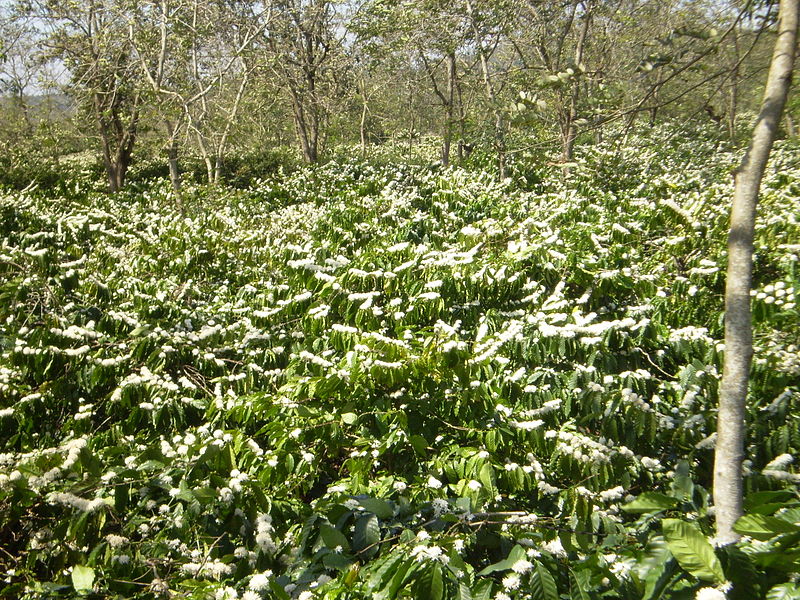

Arabica Coffee
Arabica coffee is the Vietnamese name for the coffee species (scientific name: Coffea arabica) because this coffee species has small leaves and trees are usually kept low like tea plants, an industrial crop common in Vietnam.
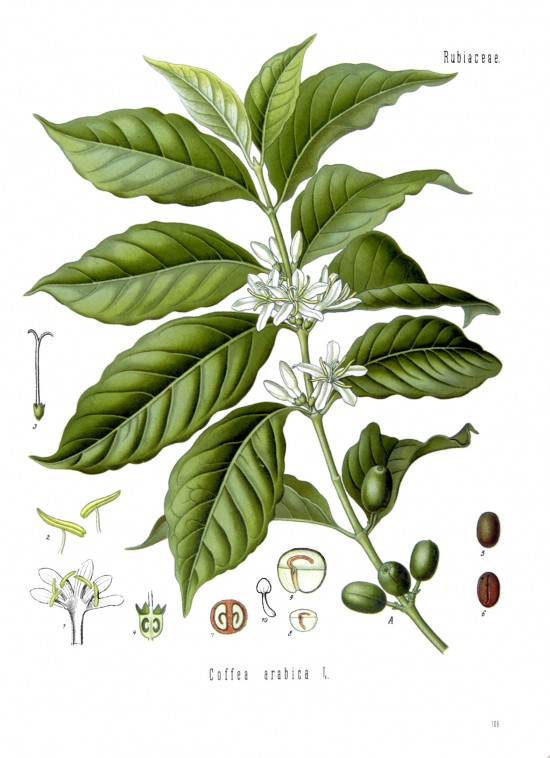
There are two types currently grown in Vietnam: Mocha and Catimor
a) Mocha: charming, intoxicating aroma, mild taste, but very low yield. The domestic price is not high because it cannot be exported, while the export price is very high – 2-3 times that of Robusta – but growing it doesn’t cover costs, so farmers rarely grow this type of coffee.
b) Catimor: Rich aroma, slightly sour taste, export price twice that of Robusta – but not suitable for the Central Highlands climate because the fruit ripens during the rainy season and is not concentrated – so harvesting costs are very high. Currently in Quang Tri, this tree variety is being grown experimentally on a large scale and shows very good prospects.
Arabica is the most economically valuable species among coffee plant species. Arabica coffee accounts for 61% of global coffee products. Arabica coffee is also called Brazilian Milds if it comes from Brazil, Colombian Milds if it comes from Colombia, and Other Milds if it comes from other countries. This shows that Brazil and Colombia are the two main exporting countries of this coffee type, and their coffee quality is also rated highest. Other exporting countries include Ethiopia, Mexico, Guatemala, Honduras, Peru, and India.
Arabica coffee trees prefer to live in high mountain areas. People usually grow them at altitudes from 1000-1500m. The tree has a large canopy, dark green color, oval-shaped leaves. Mature coffee trees can be 4-6m tall; if left to grow wild, they can reach 15m. The fruit is oval-shaped, each fruit containing two coffee seeds.
Arabica coffee can begin to be harvested about 3 to 4 years after planting. Usually, 25-year-old coffee is considered old and can no longer be harvested. In reality, it can continue to live for about another 70 years. Arabica coffee trees prefer temperatures from 16-25°C, rainfall of over 1000mm.
In the market, Arabica coffee is valued higher than Robusta coffee (Coffea canephora or Coffea robusta) because it has better flavor and contains less caffeine. A bag of Arabica coffee (60 kg) usually costs twice as much as a bag of Robusta coffee. Vietnam is the world’s second-largest coffee exporter but mainly Robusta coffee. In 2005, the area planted with Arabica coffee was expected to reach only about 10% of the total national coffee growing area (about 40,000 ha/410,000 ha).
The reason it’s difficult to develop Arabica coffee is that the altitude in Vietnam is not suitable. Coffee specialization areas in Vietnam like Buon Ma Thuot in Dak Lak, Bao Loc in Lam Dong… all have altitudes from only 500-1000m above sea level. This species also has many pests and diseases, so it’s not as economical as growing Robusta coffee if grown in Vietnam.
Robusta Coffee
Robusta coffee (also called Voi coffee, Ro coffee) scientific name: Coffea canephora or Coffea robusta is the second most important tree among coffee species. About 39% of coffee products are produced from this type of coffee.
The world’s largest Robusta coffee exporter is Vietnam. Other important exporting countries include Côte d’Ivoire, Uganda, Brazil, and India.
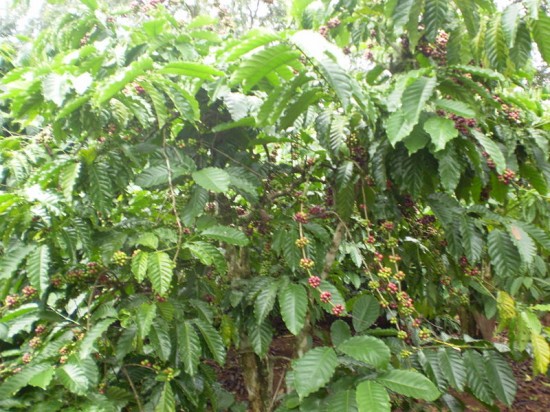
Characteristics of Robusta Coffee Trees
Robusta coffee trees take the form of timber trees or shrubs; mature trees can reach up to 10m in height. Coffee fruit is round, seeds smaller than Arabica coffee seeds. Caffeine content in Robusta coffee seeds is about 2-4%, while in Arabica coffee it’s only about 1-2%.
Like Arabica coffee, 3-4-year-old Robusta coffee trees can begin to be harvested. Trees produce seeds for about 20 to 30 years. Robusta coffee prefers to live in tropical areas, with suitable growing altitude below 1000m. The tree’s preferred temperature is about 24-29°C, rainfall over 1000mm. Robusta coffee trees need more sunlight compared to Arabica coffee trees.
Robusta Coffee Bean Flavor
Robusta coffee contains higher caffeine content and has less refined flavor than Arabica coffee, therefore it’s rated lower.
The price of one bag of Robusta coffee is usually only half that of Arabica coffee. In 2004, Vietnam exported over 14 million bags of this coffee type, accounting for nearly half of the world’s Robusta coffee exports (over 30 million bags). Currently, nearly 90% of the coffee area in Vietnam is planted with Robusta coffee, 10% with Arabica coffee, and about 1% remaining is planted with Liberica coffee (Coffea excelsa).
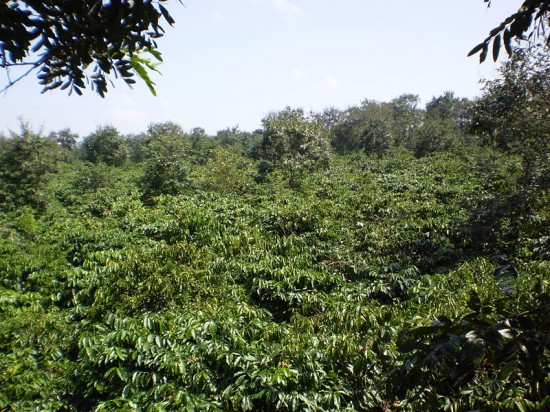
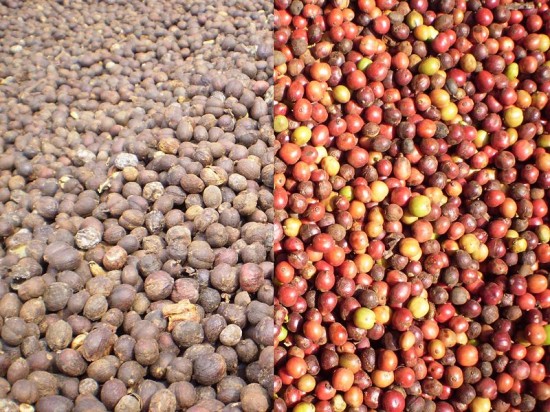
Liberica Coffee
Liberica coffee or Liberia coffee (scientific name: Coffea liberica, synonym Coffea excelsa belonging to the Rubiaceae family) is one of the 3 main types of the coffee family.
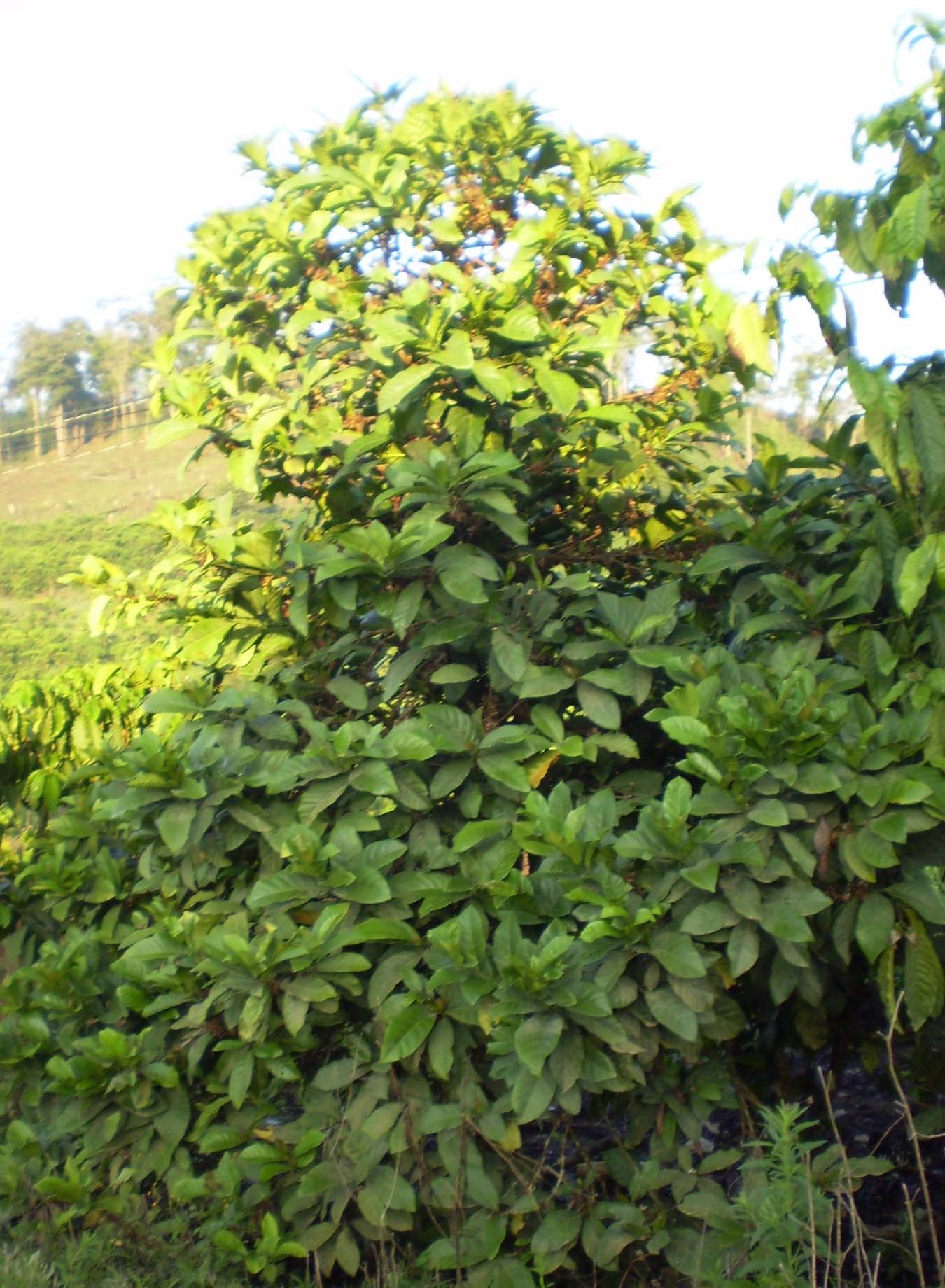
Distinguishing Characteristics
Trees are 2m-5m tall. The trunk, leaves, and fruit are all large, completely different from other coffee types like Robusta and Arabica. Due to large, dark green leaves that look like jackfruit trees from a distance, it’s called Liberica coffee for this reason. Trees tolerate drought well, need little irrigation, so are usually grown extensively. However, due to poor yield and low quality (has sour taste), it’s not favored and area development is limited.
In Vietnam
In Vietnam, the tree is mainly grown in provinces like Nghe An, Gia Lai, Kon Tum – provinces with conditions suitable for industrial crop development but not completely favorable for coffee development. This is also the main reason why Dak Lak, and especially Buon Ma Thuot, considered the coffee capital, has very little area planted with this coffee type.
In the Central Highlands, Liberica coffee usually flowers and is harvested later than other coffee species due to the characteristic of flowering with rainwater. Fruit is usually harvested in the 12th lunar month, after other coffee species have finished harvesting. Liberica coffee yield is not large; seeds are large, elongated, and white. Trees are usually grown as pure stands or as windbreaks for Robusta coffee plots, usually planted in rows 5-7m apart.
Due to drought tolerance and high resistance to pests and diseases, Liberica coffee is currently used as rootstock for grafting other coffee types, much favored by gardeners.
* Liberica coffee beans are usually mixed with Robusta and Arabica when roasting and grinding to create flavor.
Unverified information: Liberica coffee usually suits European tastes; European-style instant coffees usually have a high proportion of Liberica coffee, so they often have the characteristic sour taste.
* Excelsa coffee (Coffea excelsa) is commonly called Liberica coffee
Trees grow over 10 meters tall, timber trunk form, large leaves. Fruit ripens late, contains about 2% caffeine content per seed, has sour taste. Bears fruit for about 30-40 years. Suitable altitude below 800m, average temperature 26°-30°C, rainfall over 1000mm, needs much sunlight. Easy to grow, few pests and diseases, little care needed.
* Liberica coffee variety mainly originates from the West Africa region.
When the number of areas and plantations had increased considerably, in the early 1950s, a third variety, Arabica coffee, was introduced for cultivation but was little favored because it was quite complex.
* Liberia coffee (Coffea liberica) is a variety also called Liberica coffee
Only grown in Liberia, Sierra Leone, Equatorial Guinea countries in the West Africa region. Previously, around some plantations near Buon Ma Thuot and the Dat Ly, Ea Pok areas, it appeared but in insignificant quantities and was called Seri coffee. Trees are taller, leaves larger than the Excelsa variety and ripen later, with sour taste. In Europe, they like to use it for blending with the other two types when roasting and grinding.
Reviewing the basic characteristics of the main coffee varieties shows that selecting suitable land for trees is important, affecting yield and product quality. If wanting to bring to other land areas, there must be selection, finding suitable lines that have been acclimatized, and especially there must be participation from scientists specializing in crop varieties. One cannot arbitrarily, willfully impose subjective ideas contrary to nature like the stories told above.
Therefore, at the present time, it can be said that coffee trees in Vietnam do not yet have a brand and have not developed in a truly sustainable way, despite the rich Vietnamese coffee history. Recently, we’ve seen the beginning of building the Buon Ma Thuot coffee brand of Vietnam. This is something that managers, policy planners, and crop care agencies need to pay attention to so that Vietnam’s Robusta coffee can firmly assert its number 1 position in the global market, honoring the legacy of Vietnamese coffee origin and development.
Additional Reference Types
1. Culi Coffee
A selection of the plumpest, roundest coffee beans from Robusta, Arabica, and Cherry varieties. These are coffee beans that have accumulated the most essential elements that nature has given to the red basalt soil region. Using modern screening and refining technology to create the most perfect product.
Characteristics: Plump, round coffee beans. Especially, each fruit contains only one unique seed. Bitter taste, intoxicating aroma, high caffeine content, creamy black water color – these are what Culi coffee brings. This is the process of combining the essence of uniqueness.
2. Robusta-Arabica Coffee
This is a product line based on the perfect combination of Robusta and Arabica. A product that has screened all the essence that nature has bestowed on the sun-and-wind-filled Highland region that is very hospitable.
Characteristics: Creates a distinctive coffee type, deep brown water color. The combination of Robusta’s bitter taste and Arabica’s rich aroma. Creates a truly comfortable relaxing feeling.
3. Robusta-Cherry Coffee
This is a combination product line with distinctive nuances. Not inferior to Robusta-Arabica. The harmony between Robusta’s bitterness and Cherry’s seductive sourness. From there, conquering hearts with an ecstatic and intoxicating feeling like lovers.
Characteristics: Creamy, thick water, bitter and sour tastes mixed together to create a beverage. This is the result of the sour and bitter love affair.
4. Robusta-Culi Coffee
This is a comprehensive Robusta-Culi product. Creating even more richness in color as well as enhancing Robusta’s bitter taste. Creating an even richer product line specifically for coffee connoisseurs and those who like strong sensations.
Characteristics: Bitter taste, light aroma, relatively high caffeine content, creamy brown water color. Creates a refreshing, more energetic feeling.
5. Euro Coffee
A product inspired by football passion. Sleepless nights with football season. The perfect combination of premium coffee types. Gives users a feeling of excitement and increases football passion.
Characteristics: With perfect formulation and modern equipment and technology chains, it has created distinction for a product full of passionate character. The rich, captivating aroma of Arabica, the bitter taste of Robusta, the sourness of Cherry, and the very high caffeine content of premium Culi coffee beans. All create an endless passion for sleepless nights with the round ball.
Source: “History of the Coffee Industry” — Vietnam Coffee and Cocoa Association (VICOFA). Retrieved September 12, 2025, from https://vicofa.org.vn/luoc-su-nganh-ca-phe-bid1.html
